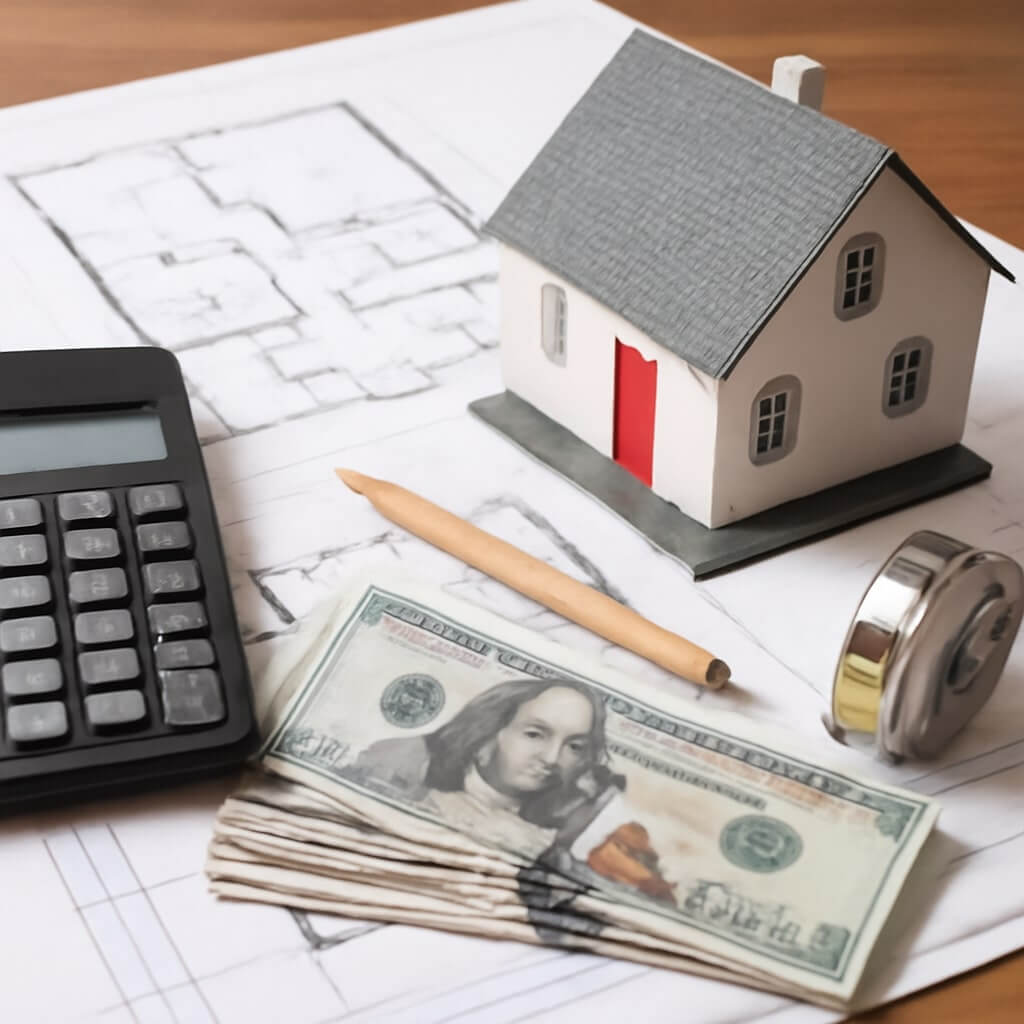When estimating your home addition budget costs, it’s essential to start with a clear project scope. This means determining your goals and the specific space requirements you have in mind. Once you’ve outlined your vision, you’ll need to research average material and labor costs. However, these figures are just the beginning; understanding the nuances of design fees and permits can greatly impact your overall budget. So, what should you consider next to guarantee you’re fully prepared?
Key Takeaways
- Define project goals and space requirements to establish a clear scope for your home addition.
- Research average costs for materials and labor to create a realistic budget.
- Include design and permitting fees, consulting local authorities for necessary permits.
- Estimate construction and labor expenses, ensuring they align with your overall budget.
- Set aside 10-20% of your budget for contingencies to handle unexpected costs.
Determine Your Project Scope
When planning a home addition, the first step is to clearly define your project scope. Identify your project goals, such as increasing living space or enhancing functionality.
Next, assess your space requirements by considering how you’ll utilize the new area. Will it be a family room, extra bedroom, or perhaps a home office? Be precise about dimensions and layout to guarantee the addition meets your needs.
This clarity helps streamline the design process, making it easier to communicate with contractors. By establishing your project scope early on, you’ll set a solid foundation for a successful home addition.
Research Average Costs
With your project scope clearly defined, the next step is to research average costs associated with home additions.
Begin by gathering data on average material costs, which can vary greatly based on your chosen materials and their availability.
Gathering average material costs is essential, as they can significantly fluctuate based on your selected materials and their availability.
Look into local labor rates, as these can fluctuate depending on your region and the contractor’s experience.
Get estimates from several contractors to understand the market better.
Additionally, consult online resources or local home improvement stores for pricing benchmarks.
This knowledge will help you create a realistic budget, ensuring you’re prepared for the financial commitment involved in your home addition project.
Factor in Design and Permitting Fees
As you develop your budget for a home addition, don’t overlook the importance of design and permitting fees, which can greatly impact your overall costs.
Incorporating design considerations, such as architectural plans and interior layouts, requires professional input, often leading to additional expenses.
Moreover, the permitting process can vary considerably based on your location and project scope, potentially introducing unexpected costs.
It’s essential to consult with local authorities to understand the necessary permits and associated fees.
Include Construction and Labor Expenses
After considering design and permitting fees, it’s time to turn your attention to construction and labor expenses, which form a significant portion of your overall budget. You’ll need to account for various construction materials and labor rates that can vary widely based on your location and the project’s complexity. Here’s a helpful breakdown:
| Expense Type | Estimated Cost |
|---|---|
| Construction Materials | $10,000 – $30,000 |
| Labor Rates | $50 – $150/hour |
| Total Estimated | $20,000 – $60,000 |
Carefully estimating these costs guarantees you stay within budget while achieving your desired home addition.
Plan for Contingencies and Additional Costs
While you may have a well-defined budget for your home addition, it’s crucial to plan for contingencies and additional costs that can arise unexpectedly.
Set aside at least 10-20% of your budget for these unexpected expenses, as they can include hidden structural issues or permitting fees.
Allocate 10-20% of your budget for unforeseen expenses like hidden structural issues or permitting fees.
Make sure your budget flexibility allows you to adapt to these potential surprises without derailing your project.
By anticipating these costs, you can maintain control over your finances and avoid stress.
Conclusion
In estimating your home addition budget, you’ve taken essential steps to guarantee financial clarity. By defining your project scope, researching average costs, and factoring in design and permitting fees, you’re laying a solid foundation. Including construction and labor expenses while planning for contingencies will help you navigate unexpected challenges. With a well-structured budget, you can confidently move forward with your project, transforming your home while keeping costs in check. Stay organized and proactive for the best results.

